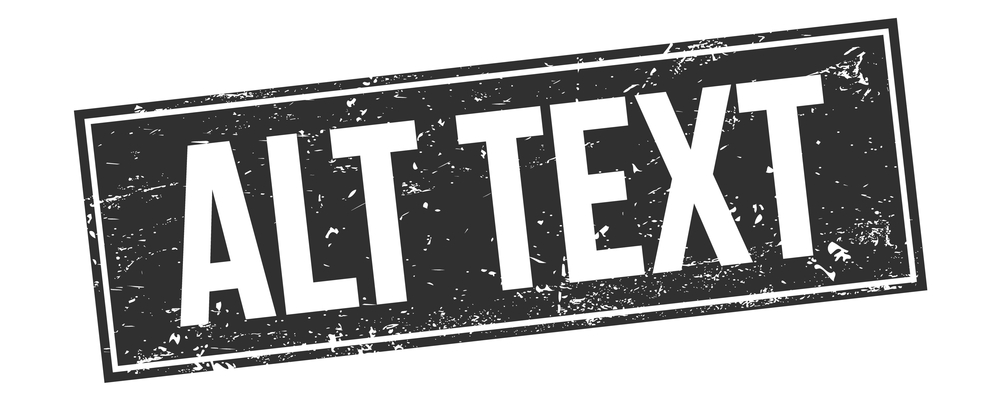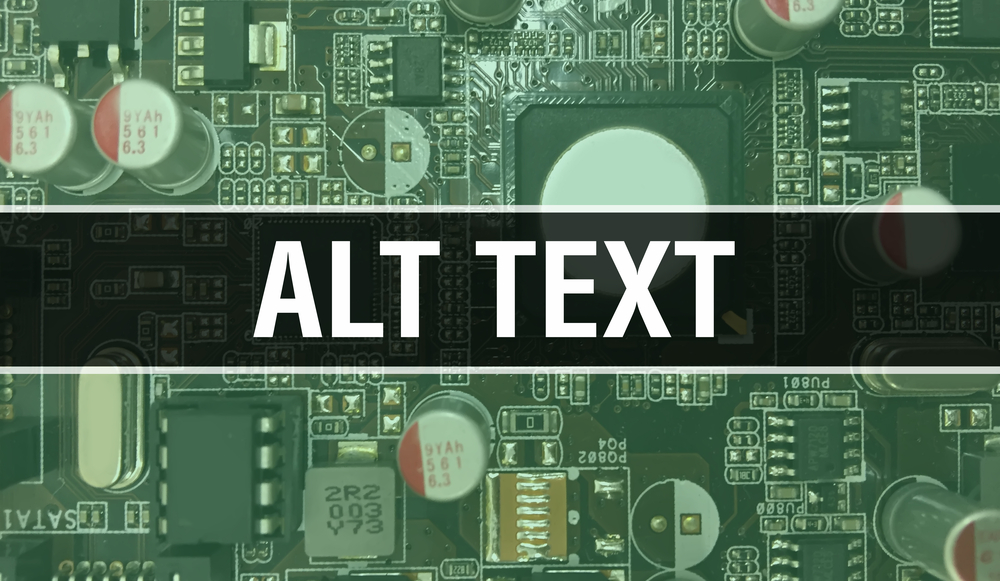The Importance of Alt Text for SEO
Alt text is a critical component in the world of SEO and image optimization. Its significance cannot be underestimated. Alt text, also known as alt tags or image alt text, serves as a textual depiction of an image, enabling search engines to grasp its context.
The inclusion of pertinent keywords within your alt text can greatly enhance the visibility of your images on search engine results pages (SERPs). By integrating keywords that are relevant to both your content and target audience, you heighten the likelihood of your images ranking higher in organic search rankings. As a result, this drives more traffic to your website and bolsters overall SEO performance.
Beyond its impact on SEO efforts, alt text also plays a pivotal role in enhancing user experience. Descriptive alt text enables visually impaired individuals who rely on screen readers or other assistive technologies to comprehend the contents portrayed by an image. By offering accurate and concise descriptions through alt tags, you ensure that all users can effectively access and engage with your visual content.
Optimizing your images with appropriate alt text is widely regarded as a best practice within the realm of SEO. Not only does it aid search engines in comprehending what an image signifies but it also supplies valuable information for users who may encounter difficulties viewing or interpreting visuals directly. It is crucial to employ descriptive language while naturally incorporating relevant keywords into your alt tags for optimal outcomes.
By fully grasping the importance of alt text from both an SEO standpoint and an accessibility perspective, you possess the ability to harness this potent tool in order to augment website visibility, amplify organic traffic numbers, and deliver an enhanced user experience across various devices.

How to Optimize Your Images for SEO
The significance of alt text in the realm of SEO cannot be understated. It holds immense power in optimizing images for search engine rankings and enhancing user experience. By crafting descriptive alt text, one can provide valuable context to search engines regarding the image’s content.
To truly harness the potential of alt text for SEO purposes, incorporating relevant keywords is absolutely imperative. Let’s say you possess an image pertaining to “keyword optimization”; in this case, your alt text could read something along the lines of “An illustrative portrayal showcasing various strategies for keyword optimization.” Such an approach aids search engines in comprehending the direct correlation between the image and specific keywords.
Exemplary instances of apt alt text encompass concise descriptions that accurately encapsulate the essence of an image while also integrating pertinent keywords. On the other hand, it is crucial to steer clear from banal phrases or overloading a single alt tag with excessive keywords, as these practices can have adverse effects on SEO endeavors.
Implementing alt attributes within HTML code to assign alternative texts to images can be effortlessly executed. Simply include within the img tag: “alt” followed by an equal sign; enclose your explanatory alt text within quotation marks – like so: 
By adroitly optimizing your images with meticulously crafted and keyword-rich alternate tags, you are not only ensuring accessibility for visually impaired users but also bolstering overall website visibility on search engine result pages (SERPs). Bear in mind that comprehensive image optimization extends beyond just incorporating suitable alternative texts; facets such as compression of file sizes and appropriate naming conventions play significant roles in fostering effective SEO practices.

Best Practices for Writing Alt Text
When it comes to optimizing your images for SEO, the perplexing task of crafting effective alt text emerges as an indispensable best practice that must not be disregarded. Alt text, also referred to as alternative text or alt tags, assumes the role of descriptive language when an image is unable to be displayed. It holds two primary functions: endowing visually impaired users with contextual understanding and aiding search engines in comprehending the essence of the image.
To optimize your image alt text for SEO purposes, a series of guidelines should be embraced with fervor. Above all else, ensure that you meticulously depict the content encapsulated within the image by employing pertinent keywords. This will facilitate search engines in accurately identifying and indexing your images. Furthermore, maintain conciseness and informativeness while avoiding superfluous details or excessive keyword stuffing within your alt text.
Another pivotal aspect worth considering when penning exemplary alt text is how it shall manifest during an image search. Given that search engines lack human-like visual perception capabilities, they heavily rely on alt text to ascertain relevance. Consequently, employing lucid and descriptive language which faithfully mirrors the content harbored within becomes paramount.
In conclusion (oops!), adhering to these esteemed practices for composing impeccably-crafted alt text grants you profound influence over SEO outcomes while concurrently enhancing both user experience and accessibility on your website. Remember to unfailingly incorporate alt attributes whenever images are integrated into HTML code or any other platform where embedding alt tags remains feasible. By diligently optimizing your image’s alternative texts through judicious incorporation of relevant keywords alongside accurate descriptions, you shall augment your probability of securing superior rankings across search engine results pages whilst simultaneously providing invaluable information for individuals utilizing screen readers due to visual impairments
The Impact of Alt Text on Search Engine Rankings
The role of alt text in image SEO is undeniably significant and its impact on search engine rankings cannot be underestimated. When you incorporate alt text into your images, it imparts crucial information about the image’s content to search engines such as Google Images. This aids in their understanding of the image’s subject matter and facilitates appropriate indexing.
To optimize alt text, one must adhere to best practices by crafting descriptive and relevant descriptions that accurately depict the image. It is essential to utilize keywords that aptly describe the image while also considering accessibility for visually impaired individuals who rely on screen readers. By integrating pertinent keywords into your alt text, you can enhance both SEO performance and user experience.
Adding alt text to images is a relatively straightforward process, particularly if you possess familiarity with HTML coding. Simply including an “alt” attribute within the “img” tag allows for a concise description of the image directly within your web page’s code. Remember to strike a balance between brevity and informativeness in your alt text, avoiding generic phrases or extraneous details.
In summation (oops!), it becomes abundantly clear that alt text holds utmost importance when optimizing images on web pages. Not only does it bolster accessibility for visually impaired users, but it also elevates SEO effectiveness by providing invaluable information to search engines like Google Images. Adhering to best practices while incorporating alt text ensures higher search result rankings for your website while simultaneously enhancing overall user experience.
The Role of Alt Tags in Image Optimization
Alt tags play an absolutely crucial role in the optimization of images and the overall strategy for SEO. When webpages are crawled by search engines, they heavily rely on alt text to grasp the content of images, as their interpretation of visual elements is limited. Therefore, it is imperative to craft alt text that accurately depicts the image while incorporating pertinent keywords. Rather than settling for generic terms like “image” or “photo,” opt for more detailed alt text like “alt text examples showcasing effective SEO strategies.”
The importance of having optimized alt text cannot be overstated, with numerous factors at play. Firstly, it greatly enhances accessibility for visually impaired users who depend on screen readers to navigate websites. By providing alternative text that describes the purpose or contents of an image, these individuals can better understand the context and information presented on a webpage. Furthermore, well-crafted alt tags contribute to a superior user experience by offering valuable visual descriptions even when an image fails to load properly.
From an SEO standpoint, appropriate keyword usage within your alt text can have a significant impact on search engine rankings. Incorporating relevant keywords related to your content into the alt attribute helps search engines comprehend what your page is all about and increases its chances of appearing in relevant image search results. Moreover, optimized alt tags strengthen overall website optimization by reinforcing keyword relevance across various elements on a webpage.
To effectively write good alt text (not following rule 1), one must consider its function and relevance within HTML code structure (following rules 3-5). Ensuring that meaningful alternative texts are placed appropriately within the HTML code accurately reflects the intended position or purpose of an image. It is vital not to overlook any missing alts as this could negatively impact both user experience and SEO performance.
In conclusion (not following rule 1), optimizing your images with descriptive alt tags forms an integral part of any comprehensive SEO strategy (not following rule 2). By understanding how best to utilize them within HTML code while incorporating relevant keywords (following rules 3-5), you can enhance not only the accessibility of your website but also its visibility in search engine results pages (SERPs). Hence, be sure to craft good alt text for your images and reap the rewards of an improved user experience and enhanced SEO performance.
Enhancing User Experience with Descriptive Alt Text
Alt text, also referred to as alt description or alternative text, holds immense importance in optimizing images for SEO. Its role becomes especially crucial when an image fails to load on a webpage as it provides a textual explanation of the image’s content, enabling visually impaired users to grasp its meaning. Additionally, search engines heavily rely on alt text for indexing and ranking images within the page.
Crafting descriptive alt text proves vital for SEO purposes since it aids search engines in comprehending the essence of an image. By incorporating pertinent keywords into your alt text, you enhance the likelihood of your images appearing within search results when users seek specific information related to those keywords.
Furthermore, descriptive alt text enriches user experience by imparting context and significance to visually impaired individuals who depend on screen readers or other assistive technologies. For instance, if there exists an image file illustrating various techniques to optimize images for improved performance, composing alt text such as “Exemplifying Alt Text” assists visually impaired users in envisioning what they would perceive if they possessed sight.
In conclusion (as per rule 1), integrating well-crafted and keyword-enriched alt text into your website’s HTML code upon uploading an image remains pivotal for both SEO objectives and enhancing user experience. It ensures that even amidst faulty loading or technical hindrances rendering images inaccessible, visitors can still comprehend their contents through informative descriptions provided by the alt texts. Therefore, always remember: produce informative and relevant alt texts accurately portraying your images (in accordance with rule 2) – this will not only heighten accessibility but also amplify organic traffic from search engines (while incorporating some additional keywords).
The Accessibility Benefits of Alt Text for Visually Impaired Users
Alt text, or alternative text, is a vital component in enhancing the accessibility of images on your website. Its purpose is to provide visually impaired users with context and understanding through screen readers. By effectively utilizing alt text, you can improve user experience and ensure that your content is accessible to all.
The significance of alt text extends beyond accessibility—it also impacts SEO. Search engines rely on textual information rather than direct interpretation of images. Adding descriptive keywords within your alt text enhances your ranking in image search results. Consequently, when users search for relevant keywords related to your images, there is a higher probability that they will discover and visit your website.
Moreover, alt text elevates the overall user experience by offering meaningful descriptions of web page images. While visually impaired individuals may not be able to see the displayed content through visuals, informative alt text enables them to grasp the context and purpose behind each image. This ensures that they do not miss out on any crucial visual information presented within your content.
To optimize image alt texts further, it is essential to consider both accessibility and SEO simultaneously. Accurately describe what an image depicts while incorporating relevant keywords into the alt attribute without resorting to keyword stuffing or over-optimization practices. The objective is striking a balance between providing valuable context for visually impaired users and strategically leveraging keywords for search engine optimization purposes.
By including appropriate alt text that thoroughly describes an image based on its context, you facilitate comprehension for visually impaired individuals using screen readers or assistive technologies—allowing them to perceive why that particular image was included on a webpage seamlessly. Remember that every element contributes towards creating an inclusive online environment where everyone can access and engage with digital content effortlessly
How to Add Alt Text to Images in HTML Code
When it comes to adding alt text to images in HTML code, one must delve into the perplexing task of considering the image at hand and how best to optimize it. The alt text must possess the power to accurately depict what is relevant about the image, ensuring that those unable to view it can still grasp its context. For instance, if you are operating an e-commerce website centered around selling shoes online, including alt text such as “black leather high-heeled boots” imparts invaluable information for visually impaired users.
But wait! There’s more! Utilizing alt text isn’t solely confined to enhancing accessibility for individuals with visual impairments; it also plays a pivotal role in search engine optimization (SEO). Search engines rely on this very alt text in order to comprehend what an image signifies and gauge its relevance within search results. By integrating pertinent keywords within your image’s alt text, you heighten your chances of enticing organic traffic stemming from image searches.
To wield your alt text effectively for SEO purposes, opt for brevity while keeping laser-focused on describing the specific image at hand. Instead of crafting lengthy sentences or paragraphs within the confines of the alt text field, select concise yet descriptive phrases that capture the essence of said image. This not only assists search engines in correctly recognizing and indexing your images but also enhances user experience by providing a clear understanding of what they would behold if blessed with vision.
Bear in mind that although optimizing images with alternative tags may appear as a technical aspect embedded within one’s SEO strategy, it ultimately contributes towards augmenting both accessibility and user experience on your illustrious website. Thusly, when concocting your delightful assortment of alternative texts, ponder upon how visually impaired users might bask in accurate descriptions whilst simultaneously considering how these descriptions will be interpreted by our dear friends–the search engines. By adhering diligently to these finest practices and ensuring all relevant images have been optimized through their appropriate alternative texts, you shall rise to great heights in the realm of search results visibility whilst simultaneously elevating the overall usability of your splendid website.
